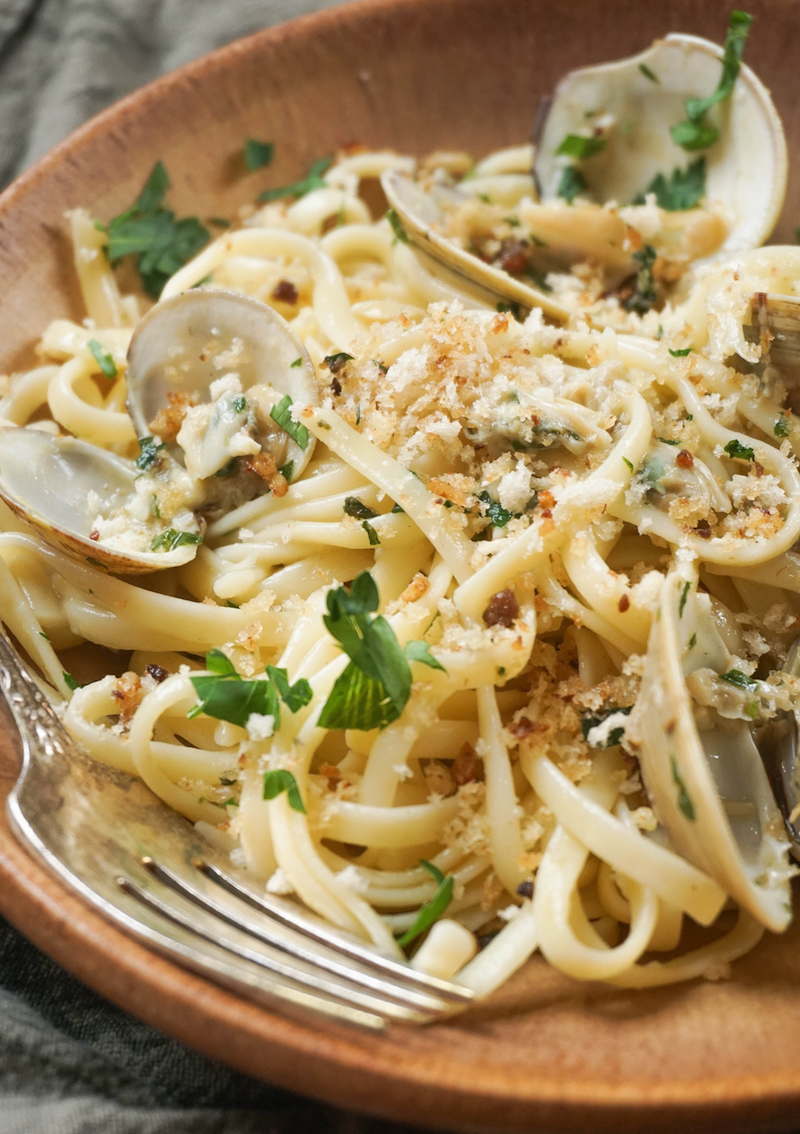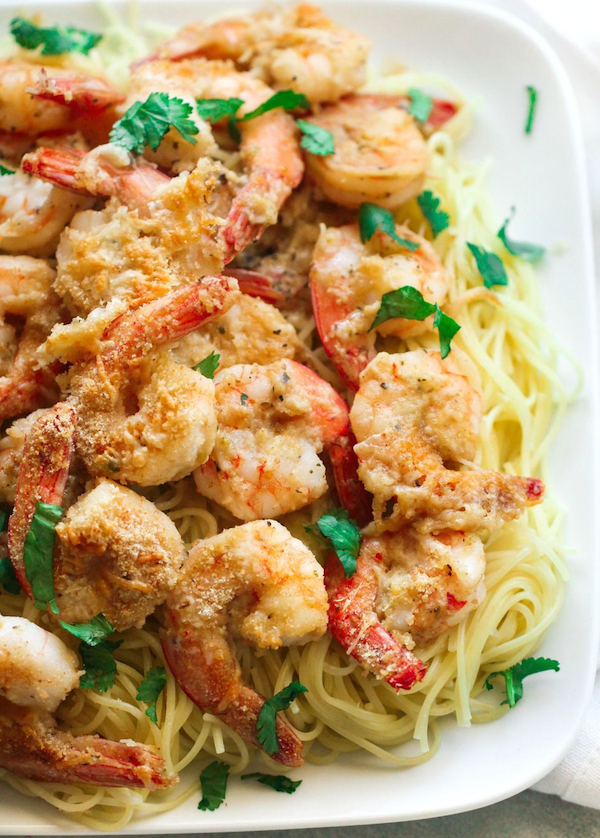Knowing how to properly prepare these succulent, delicious dishes yourself is essential to satisfying your cravings and also to treating guests to some fabulous Mediterranean delicacies.
Getting the base right is key to making either of these dishes. In France, they call the base for many of their sauces a "roux", which is a blend of butter and flour, whisked together to form a pasty cream. Italian sauces, especially for seafood dishes, tend to be a little more watery, but the idea is the same: the base has to be able to stick somewhat to the main elements of the dish without lumping or jamming.
Here are some tips to make your Scampi or Clams dishes the best they can be.
You are going to have to do some slicing and dicing of various items to make these dishes work, but you idon'thave to go crazy. Quarter inch sections will be adequate, and you don't need to have everything uniform. Variety, being the spice of life, is also a primary element to culinary mastery.
What you'll be cutting up are the following:
The spices and other ingredients include (and are limited only by your imagination):
Everything else:
The Basics:
Swish the garlic around in the pan until it sizzles a little, then turn down the heat and start adding in the onions, olives, peppers, and spices. About a half teaspoon of lemon juice is next, then the wine and butter, until the sauce is somewhat watery. You don't want the sauce to thicken up too much, so keeping the temperature down to a simmer is a good idea. Saute all of this slowly, but it will only take about 15 minutes to get everything working together.
You're probably going to add butter and more olive oil along the way, and don't overdo the wine, because wine is acetic and will ruin the overall flavor. Rather than adding wine, water from the boiling pot for your pasta will help keep the sauce and all the elements from coagulating. The key here is to emerge with a sauce that is thin, but a little sticky, and enough that it can be enjoyed over how many dishes of pasta and clams or shrimp you're planning.
While the sauce is cooking, your water for the linguini or pasta of choice should be boiling. The overall cooking time for the sauce need not be more than half an hour, tops. While your pasta is cooking, you can ladle in some of the steaming water to the sauce pan.
Now comes the tricky part. When to add the clams or shrimp.
First, the clam experience:
If you're like most of us normal middle class people, you'll be using raw clams from a can, the most widely available are Snow's, Chicken of the Sea, or Bumble Bee. Each of these come with some juice (and some more than others), which you'll add to your sauce after about 15 minutes, or, just after you begin boiling the linguini (which takes 10-11 minutes). You want to pour in the clam juice, but not the clams, because the clams, if cooked for more than just two or three minutes, will become hard and rubbery.
When the linguini is about three minutes from being ready, that's when you stir in the clams. They're raw and can be eaten that way, so don't worry, you want them to be chewy, not stiff.
Shrimp:
The same goes for shrimp. You'll only want to add cooked shrimp at the very end, for about two minutes, or just enough time to get them heated up. When you drop them over the pasta, they'll naturally heat up some more, so don't overdo it.
If you're using raw shrimp, you want to clean and devein them beforehand. You might want to cook them separately, either in boiling water or olive oil and butter, but that's another matter entirely. Suffice it to be said that your shrimp should be cooked until it's white and reddish, but not hard and rubbery.
Serving this dish is easy, but here's a tip: Cut a couple of pats of butter and place them on each dish so that when you ladle out the linguini it will melt underneath.
When dishing out, start with the linguini or pasta and then ladle out the sauce and all those delicious ingredients over the top.
It should be pointed out that if you are making sauce for more than just two or three people, your cooking time may be expanded to as much as 40 minutes or longer, depending on the size of army you plan on feeding.
That's about it. When all is said and done, when plated properly, the finished dishes will look something like the photos on this page. With either dish, the sauce is the key, and the only thing you may want to skimp on is the wine. Extra butter, olive oil, or clam juice will produce a more savory sauce.
Don't forget to serve with plenty of parmesan cheese, extra ground black pepper, and garlic powder on hand for those who really like to spice it up!
Buon Appetito!
 If you're Italian or Sicilian (or, if you'd like to be), you probably have an occasional yearning for specialty pasta dishes like Shrimp Scampi or Linguini with Clams.
If you're Italian or Sicilian (or, if you'd like to be), you probably have an occasional yearning for specialty pasta dishes like Shrimp Scampi or Linguini with Clams.
 First, you need to start with Extra Virgin Olive Oil. No substitutes. Olive oil is at the very heart of many Italian, Greek, French, Spanish, and Portuguese flavors, and for good reason. It's healthy and savory. Start with about three tablespoons in a saute pan over low heat. Once that warms up, then it's time to toss in some garlic, preferably from fresh cloves that you've minced. Using minced garlic from a jar is OK, though, as always, fresher is better.
First, you need to start with Extra Virgin Olive Oil. No substitutes. Olive oil is at the very heart of many Italian, Greek, French, Spanish, and Portuguese flavors, and for good reason. It's healthy and savory. Start with about three tablespoons in a saute pan over low heat. Once that warms up, then it's time to toss in some garlic, preferably from fresh cloves that you've minced. Using minced garlic from a jar is OK, though, as always, fresher is better.
|
|||
| search engine by freefind |
Your ad could be in the next issue of idleguy.com for as little as $6 per month. Contact Fearless Rick using the form on page 12 for more information.
Essential Spices for Every Kitchen
Spices every cook should have on hand. If you don't have these in your kitchen, you're doing it wrong.
Ground Black Pepper (Better yet, peppercorns and a grinder, now commercially available at just about any supermarket)
Salt (regular, granulated)
Kosher Salt
Sea Salt
Basil
Oregano
Parsley
Bay Leaves
Tumeric
Paprika
Crushed Red Peppers
Garlic Powder
Onion Powder
Cayenne Pepper
Cinnamon
Celery Seed
Thyme
Clove
Rosemary
Sage
Nutmeg
Ginger
Mustard seed
Allspice
There are, of course, many more, some more exotic than others. It wouldn't hurt to have on hand some Adobo, which combines some of the spices above and is a general "go to" additive for everything from meats to soups to stews.
